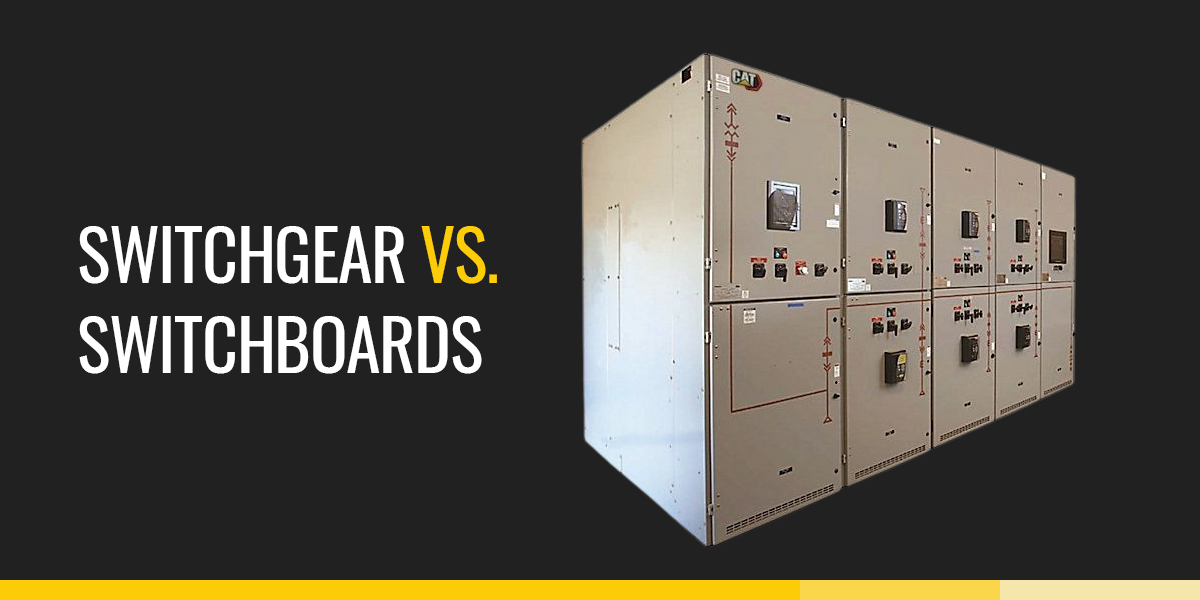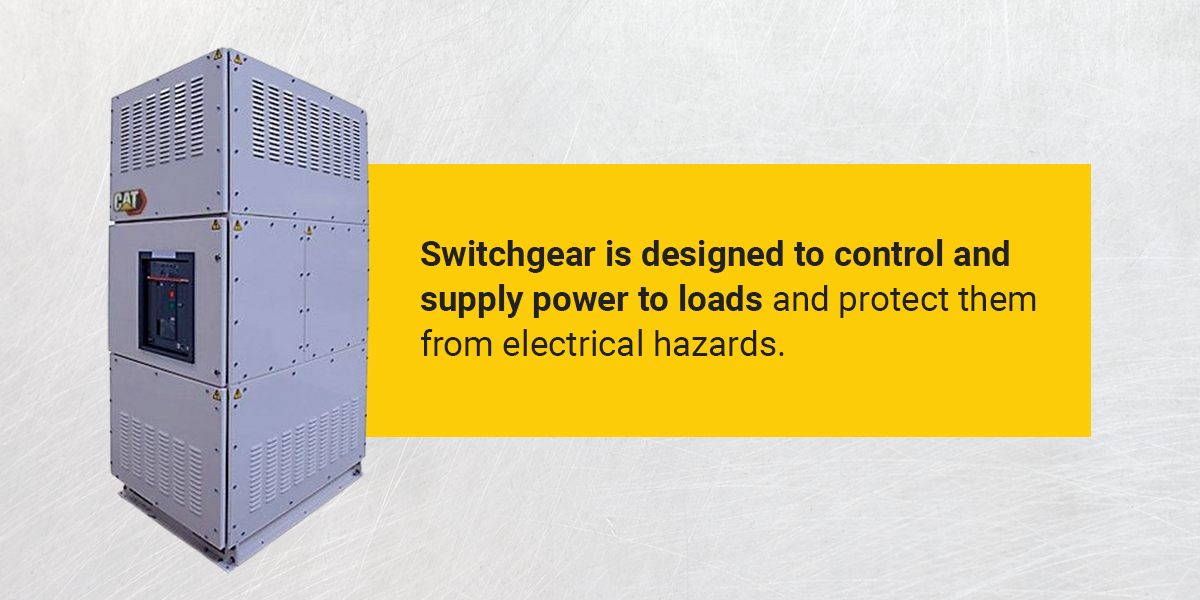

If you’re familiar with electrical power systems, you may know about switchgear and switchboards. While these types of devices have some similarities, they have distinct differences in their hardware components, intended uses, voltage capacities, and testing standards.
Whether you have some knowledge of switchgear and switchboards or you’ve never even heard of them, we’re here to help. In this guide, we’ll explore the differences in detail, helping you better understand their roles in electrical conduction. To that end, let’s dive in.
Switchgear describes a variety of devices that protect and control low-, medium-, and high-voltage electrical circuits. Their purpose involves switching generator, transformer, transmission line, motor, or power network power on and off as needed. Switchgear is used for commercial, industrial, and residential power systems alike.
There is indoor and outdoor switchgear. Indoor switchgear is often used in low-voltage systems, while outdoor switchgear usually accompanies high-voltage power systems. Indoor and outdoor switchgear can be further classified depending on their features and applications. Some specific types include gas-insulated, air-insulated, and hybrid switchgear.
Switchgear contains two primary components:
A switchboard safely controls and distributes electricity in commercial or industrial buildings. It’s a large panel with circuit breakers, switches, and other control devices mounted on the front or back end or both.
Switchboards help ensure steady electrical flow, preventing the system from short-circuiting or overloading. They can redirect incoming power and divide it into smaller circuits as needed. They essentially “switch” and reroute the energy flow direction. They come in multiple configurations, including assembly panel, single panel, and structural frame format.
Switchboards are designed for low-voltage electrical circuits under 600 volts. They distribute power to individual loads, control equipment, transformers, and panel boards.
The main components of a switchboard include:
Now that you know the basic functions of switchgear and switchboards, how exactly do they differ from each other? Here are six key differences to note when looking at a switchboard versus switchgear.
A primary difference between switchgear and switchboards is their hardware components. As we discussed above, switchgear contains switching devices for shutting the power on and off. Their components include circuit breakers, fuses, lightning arresters, isolators, relays, and disconnect devices that help control and stabilize energy flow.
Meanwhile, switchboard panels have devices for redirecting power as necessary. They contain electrical and protective control devices, switches, and busbars mounted on the front, back, or both.

Switchgear and switchboards differ in their intended uses. Used in homes, commercial settings, and industrial facilities alike, switchgear is designed to control and supply power to loads and protect them from electrical hazards. It can help identify faults and cut off the power supply as needed, protecting the system from short-circuiting or over-current.
Switchgear can switch the following power systems on and off:
Conversely, a switchboard distributes and transmits electricity to different sources, including individual loads, control equipment, transformers, and panel boards.
Switchgear is used for low-, medium, and high-voltage electrical circuits. They handle much higher voltages than switchboards. They can withstand high-voltage electricity up to 350,000 volts. Switchboards cannot manage high-voltage electricity. They can handle low-voltage electricity up to 600 volts.
Switchgear and switchboards have contrasting safety features. Typically, switchgear includes automatic safety features and a manual control option for emergencies. It can be used for both indoor and outdoor power systems. Switchgear devices often have metallic cabinets and casings, depending on the facility type.
Switchboards can also have metallic enclosures. However, some use wooden enclosures. They often include a meter showing the power each circuit consumes, but they lack the additional safety features of switchgear.
Switchgear is usually more durable, reliable, and versatile than switchboards. Naturally, they tend to come with a higher price tag.
Finally, switchgear and switchboards typically have different testing protocols. Electrical switchgear manufacturers design and test the devices to meet the following standards:
Switchboard manufacturers generally build and test the devices to meet the following standards:
Additionally, manufacturers short-circuit test unfused switchgear at 15% power for 30 cycles. Meanwhile, they test switchboards at 20% power for three cycles.
At Thompson Power Systems — a division of Thompson Tractor Company — we carry a variety of Cat electrical switchgear. Cat products are made by one of the industry’s most trusted manufacturers and are known for their incredible durability, reliability, and performance. Cat switchgear models include different configurations and features depending on your facility’s power requirements.
Proudly serving Alabama and northwest Florida for decades, we can provide you with a quality Cat power system and personalized customer service to ensure you find the solution you need. Our knowledgeable technicians are ready to help you find a product based on your unique needs and budget.
If you’d like to learn more about our available Cat switchgear or purchase a device for your facility, get in touch with us today!